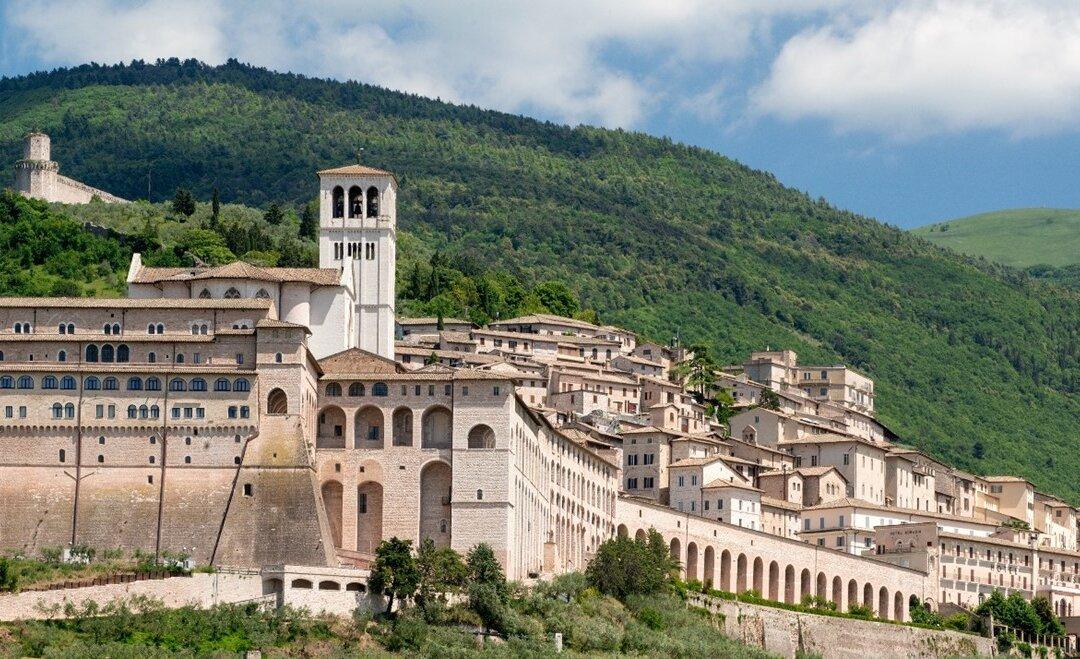In the charming streets of the Italian city of Assisi, in the region of Umbria, an atmosphere of mysticism reigns. There, perched on the glorious slopes of Mount Subasio in the province of Perugia, rests the Basilica of St. Francis of Assisi, a site of incomparable architectural and artistic treasures. The basilica not only influenced Assisi’s architecture, but also planted the seeds for the early Italian Renaissance.
The basilica was built as a shrine to honor Francis, the holy man of Assisi. The site was designed by Maestro Jacopo Tedesco and it was completed in 1253. A crypt for the saint’s body was added in 1822. The basilica’s architecture helped establish typical elements of Italian Gothic architecture, a combination of the European Romanesque and Gothic architectures. Examples of Italian Gothic architecture in the basilica include flying buttresses, a bell tower, a polychromatic setting, a rib vault, and tall vertical windows.






